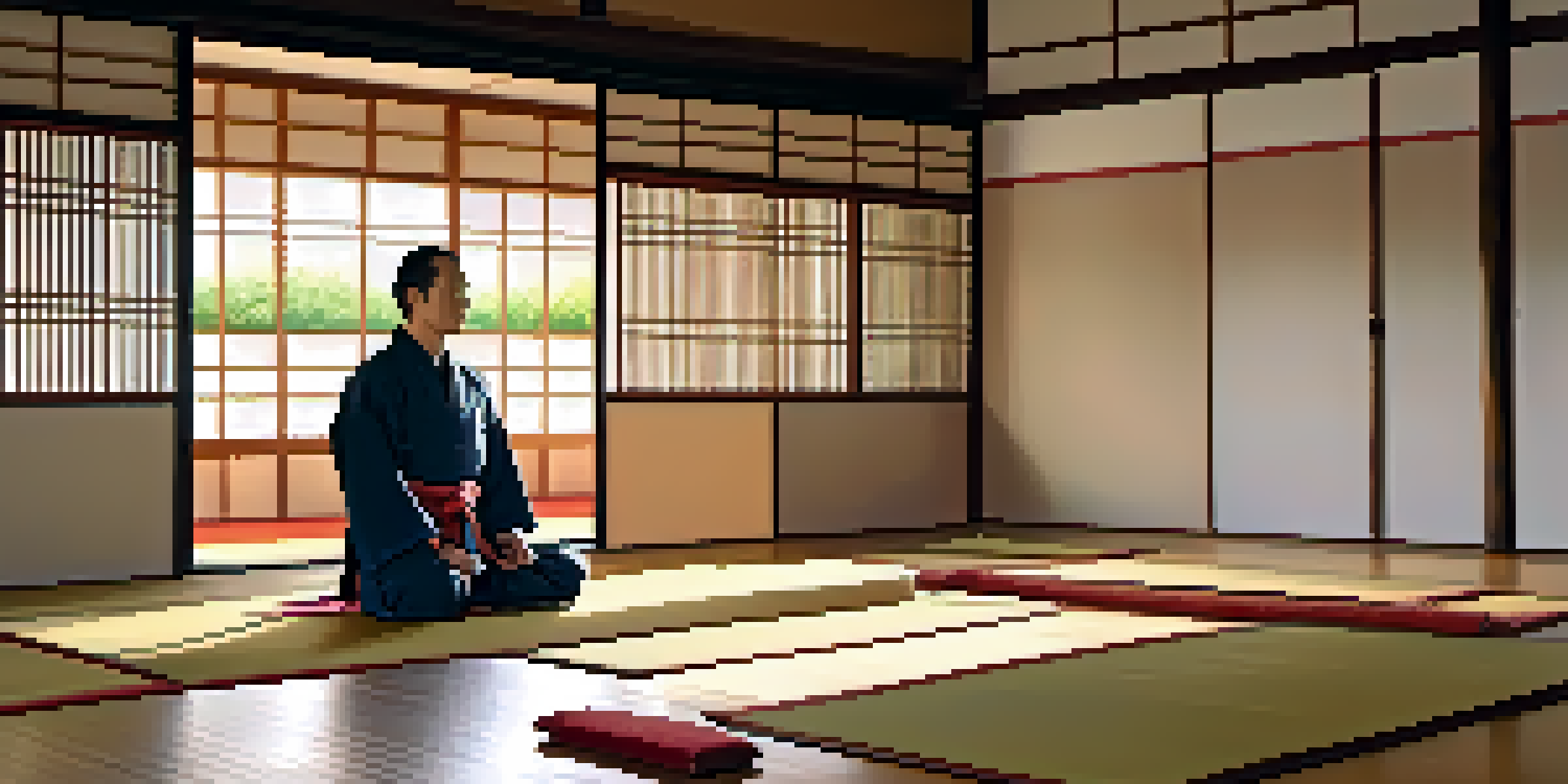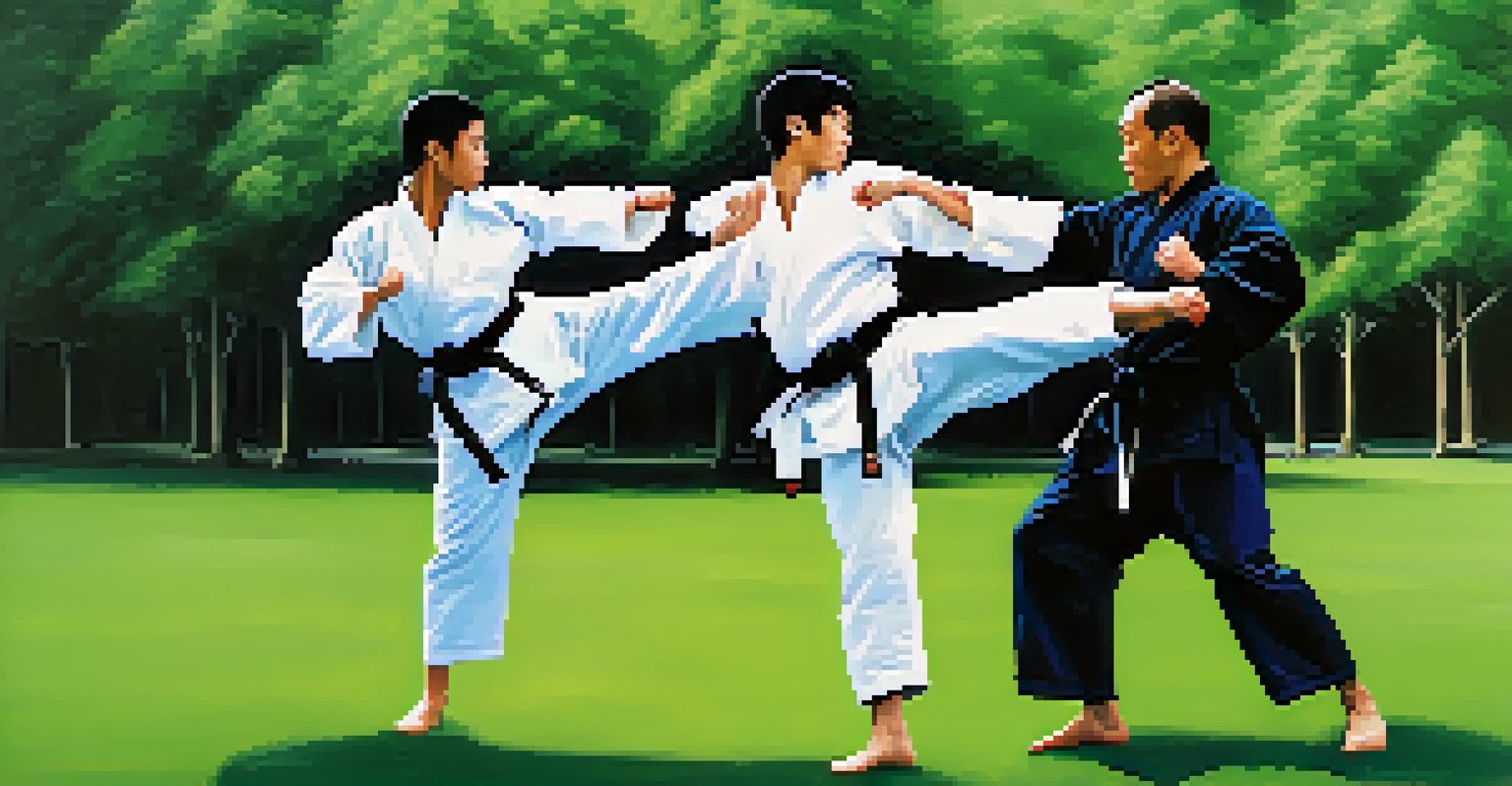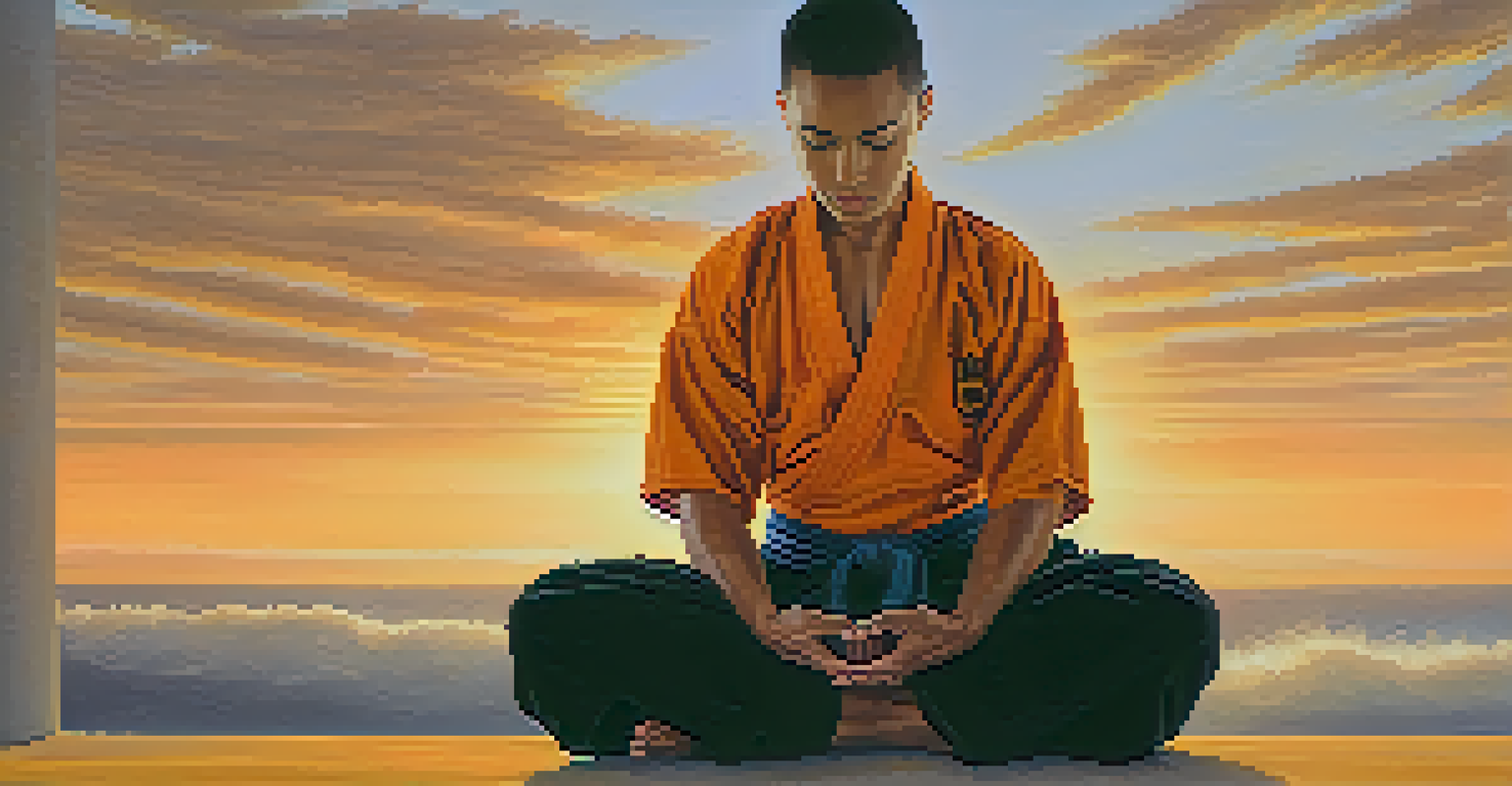Incorporating Breath Control Techniques in Martial Arts Training

Understanding Breath Control in Martial Arts
Breath control is a fundamental aspect of martial arts training that often goes overlooked. It refers to the techniques used to regulate breathing patterns during physical activity. By mastering breath control, practitioners can enhance their focus, endurance, and technique execution.
Breath is the bridge which connects life to consciousness, which unites your body to your thoughts.
In many martial arts, breathing is synchronized with movements to create fluidity and power. For instance, inhaling during a preparation phase and exhaling during a strike can maximize energy output. This synchronization not only improves performance but also helps to maintain a calm mind under pressure.
Incorporating breath control into your practice can lead to a deeper understanding of your body's capabilities. It encourages awareness of how breath affects movement, allowing martial artists to optimize their training and performance. This skill is not just beneficial for fighting but also for overall well-being.
Benefits of Breath Control Techniques
One of the primary benefits of breath control is increased stamina. By controlling your breathing, you can delay fatigue during intense training sessions or competitions. This means you’ll be able to train longer and push yourself harder without feeling worn out.

Another significant advantage is improved mental focus. Controlled breathing can help calm the mind, allowing martial artists to concentrate better during practice or competition. This mental clarity can be the difference between executing a technique perfectly or faltering under pressure.
Breath Control Enhances Performance
Mastering breath control can significantly improve focus, stamina, and technique execution in martial arts.
Moreover, effective breath control aids in recovery. Practicing deep, intentional breathing can lower heart rates and help the body recover faster after strenuous activity. This not only enhances performance but also reduces the risk of injury, making it a crucial aspect of any martial artist's regimen.
Basic Breath Control Techniques to Start With
Starting with simple techniques can make incorporating breath control into your training manageable. One effective method is diaphragmatic breathing, which involves breathing deeply from the diaphragm rather than shallowly from the chest. This technique helps increase oxygen intake and promotes relaxation.
The breath is the vital link between the body and the mind.
Another useful technique is the '4-7-8' breathing method, where you inhale for four seconds, hold your breath for seven seconds, and exhale for eight seconds. This method not only calms the nervous system but also improves lung capacity, making it an excellent warm-up before training.
Practicing these techniques regularly can help you become more aware of your breath in high-pressure situations. The more you integrate these methods into your training, the more natural they will feel, allowing you to focus on your movements without distraction.
Integrating Breath Control Into Sparring Sessions
Incorporating breath control during sparring can significantly enhance your performance. Begin by consciously focusing on your breathing patterns while engaging with your partner. Try to maintain a steady rhythm, inhaling and exhaling in sync with your movements.
As you become more comfortable, experiment with varying your breath based on the intensity of the exchange. For instance, take deeper breaths during slower exchanges and quick, sharp breaths during fast-paced action. This adaptability can help you stay calm and collected, even in the heat of battle.
Breath Techniques Aid Recovery
Practicing controlled breathing helps lower heart rates and fosters quicker recovery after intense training.
Ultimately, the goal is to make breath control an instinctive part of your sparring strategy. By developing this skill, not only do you improve your technique, but you also create a mental buffer against the stress and adrenaline of combat.
Breath Control Techniques for Meditation and Centering
Meditation and breath control go hand in hand, especially in martial arts. Incorporating breath-focused meditation into your routine can deepen your practice and enhance your overall performance. Taking a few moments to focus solely on your breath can help clear your mind and prepare you mentally for training.
A simple meditation technique is to sit quietly and concentrate on your breath for a few minutes. Notice the rhythm of your inhalation and exhalation, allowing thoughts to drift away. This practice not only calms the mind but also fosters a strong connection between breath and movement.
Regular meditation can also improve your emotional resilience, helping you react more calmly in high-pressure situations. By making breath control a part of your meditation practice, you build a solid foundation for both martial arts and everyday life.
Common Mistakes to Avoid in Breath Control
As beneficial as breath control can be, there are common pitfalls many practitioners encounter. One frequent mistake is holding the breath, especially during intense techniques or sparring. This can lead to decreased performance and increased tension, which is counterproductive.
Another mistake is not paying attention to the quality of breath. Shallow, rapid breathing can create anxiety and limit oxygen flow. Instead, focus on deep, controlled breaths, ensuring that each inhalation and exhalation is intentional and relaxed.
Common Mistakes in Breath Practice
Avoiding breath-holding and shallow breathing is crucial for maximizing the benefits of breath control techniques.
Lastly, neglecting to practice consistently can hinder progress. Like any skill, breath control requires regular training. Make it a part of your daily routine to ensure you’re not just going through the motions but genuinely enhancing your abilities.
Conclusion: The Path to Mastery Through Breath Control
Incorporating breath control techniques into your martial arts training is a journey that can lead to mastery. By understanding the importance of breath, practicing techniques, and avoiding common mistakes, you can unlock new levels of performance and focus. It’s about creating a harmonious relationship between body and mind.
As you continue to train, remember that breath control is not just a technique; it's a tool that can enhance your overall experience in martial arts. Embrace the process and be patient with yourself as you develop this skill.

Ultimately, the connection between breath control and martial arts is profound. By investing in this practice, you are not only becoming a better martial artist but also fostering greater self-awareness and resilience in all aspects of life.